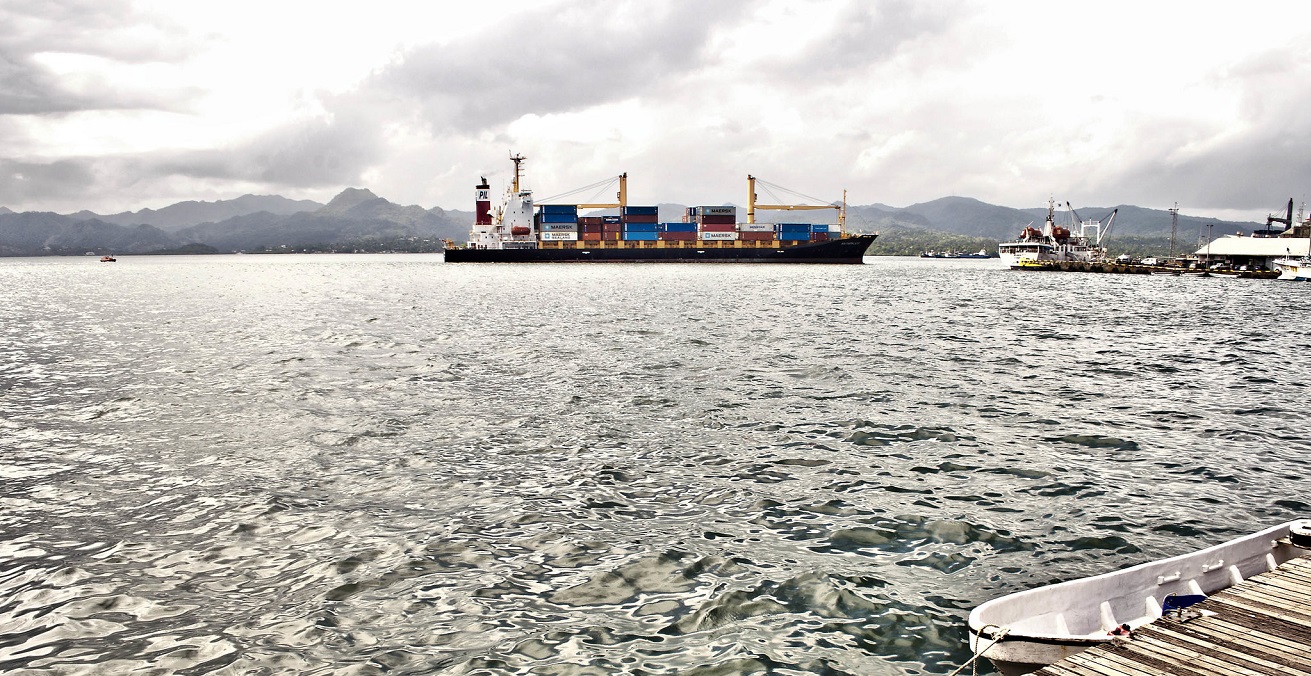Three Ways Australia can Contribute to Improved Maritime Safety in the Pacific

The vast blue Pacific Ocean is the most significant geographical feature of the Pacific region. Pacific Island countries’ domestic shipping fleets provide essential connectivity across archipelago nations but are often in very poor repair and would not pass seafaring standards in Australia or New Zealand.
Accessible transportation systems that provide safe maritime connectivity not only promote economic activity and create jobs, but can also improve access to essential services, education, healthcare, and other life-shaping opportunities that enable people to improve their living conditions and escape poverty.
The Pacific presents a unique shipping scenario with constraints found in few other global locations. Pacific Island countries have the most expensive shipping in the world, the longest transport routes, and often the oldest and least energy efficient ships. Achieving economies of scale in the provision of maritime services in the Pacific is complicated by their small size, geographical dispersion, low trade volumes, ageing and inefficient domestic vessels, and varying quality of port facilities. The extreme imbalance between inbound and outbound cargo means that most of these routes will never be considered as economically viable. Servicing remote islands, while a political, social, and economic imperative, is simply not commercially sustainable.
This has significant consequences. The fact that these shipping routes will never be economically viable means Pacific Island countries have little choice but to purchase degraded second-hand vessels. Some of these vessels have previously been involved in major accidents, posing significant safety concerns. With several serious maritime accidents in the Pacific in recent years, the region experiences the highest per capita fatality rate in the world from maritime incidents. Many of these tragedies could have been prevented with adequate investment in the domestic Pacific fleet and crew.
There is widespread recognition that the Pacific is in dire need of updated, safe, reliable, and sustainable passenger vessels. The question is how to achieve this.
A recent report looks at how Australia can partner with the region to increase access to safe maritime transportation. This report identifies three ways in which Australia could support this need for upgraded ferries: through donating a fleet of vessels, supporting a Pacific shipbuilding industry or assisting the Pacific to leverage climate financing to replace aging vessels.
Australia donates a fleet of modern ferries to the Pacific
The first option is for Australia to offer a comprehensive program of support that donates domestic ferries similar to the Guardian-class Pacific patrol boat program. In addition to the provision of vessels, Australia would need to consider ongoing support in the form of training, maintenance, and upgrade of berthing and loading facilities.
Australia is a world leader in small ferry building, renowned for its ship repair and maintenance skills and maritime crew training expertise. Australian designed and built vessels can be seen operating successfully and appropriately in French Polynesia, New Caledonia, the Seychelles, Tanzania, Maldives, and the Philippines.
However, the provision of diesel-powered vessels contradicts the Pacific’s ambition to decarbonise its fleet. Continued reliance on diesel is crippling to national budgets and could represent a missed opportunity in terms of transitioning to low/zero-carbon transport. In addition, it is likely sustainment costs of donated vessels would far exceed the cost of acquiring the vessels, particularly where maintenance regimes and support services are limited.
Australia supports a Pacific shipbuilding industry
The second option is that Australia could provide support for creating a shipbuilding industry within the Pacific region. Adequate, usable products exist that could allow Pacific Island countries to construct vessels locally. Packages are available for prefabricated small vessels (including passenger vessels) that can be put together in-country. These packages do not require sophisticated shipping yards for construction.
This approach could be tailored to the local context depending on needs and existing capacity, with optimum ship models that address carbonisation and safety elements. This approach would need to “start small” in one country and be scaled out to other locations as appropriate.
Critics of this approach, however, point out modern shipbuilding works best in “clusters” or “precincts” and requires many years and massive investment to develop. The lack of existing infrastructure, trained personnel, and technical capacity to build modern, safe, reliable vessels within the region may pose a significant barrier to the development of a Pacific Island shipbuilding industry.
Australia works with the Pacific to leverage climate financing to replace aging vessels
The third option is to assist with finding finance to secure a low/zero carbon fleet for domestic use within the Pacific region. This would build on the Pacific’s desire to decarbonise its shipping fleets and adopt up-to-date technology to increase safety at sea. But it would require significant investment. Climate financing could be harnessed to accelerate fleet replacement across the Pacific to meet emissions reductions targets at the speed and scale set by Pacific leaders.
International consensus is that sufficient technology exists in some form to produce low- or zero-carbon vessels at most scales. There is an opportunity here for Australia to work with the Pacific to invest in new technology and take on a leadership role in decarbonisation of shipping in the region.
Renewable energy (solar and wind) is already being used for maritime transport in the Pacific and could be replicated, advanced, and scaled up. However, this is viewed by some as impractical and unreliable. While alternative fuels such as methanol exist, there is currently no practical infrastructure in the Pacific to facilitate the use of such fuels. Many Pacific Island countries already struggle with adequate domestic bunkering facilities for fossil fuels. A new alternative domestic fuel source that requires new and additional bunkering infrastructure will require investment which may not be available.
Whichever option is chosen, there is a clear, urgent need to upgrade domestic vessels in the region to ensure all Pacific peoples have access to safe maritime transport.
Pacific Island countries have long raised issues of safety at sea as a critical consideration. There is a need for development partners to do more and the opportunity for Australia to engage is now.
Heather Wrathall is program lead at the Asia-Pacific Development, Diplomacy & Defence Dialogue (AP4D). This article draws on AP4D’s report on What does it look like for Australia to Partner on Maritime Safety with the Pacific.
This article is published under a Creative Commons Licence and may be republished with attribution.





